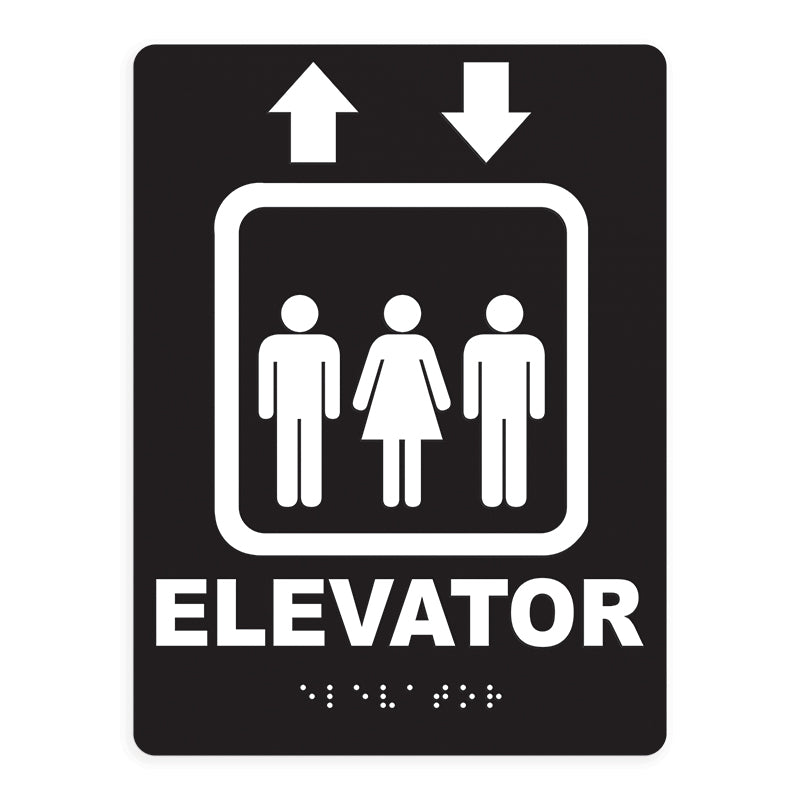Check out the Importance of ADA Signs in Public Spaces
Check out the Importance of ADA Signs in Public Spaces
Blog Article
Exploring the Secret Functions of ADA Signs for Boosted Accessibility
In the world of availability, ADA signs offer as quiet yet powerful allies, making certain that areas are accessible and comprehensive for individuals with disabilities. By incorporating Braille and tactile components, these signs break barriers for the aesthetically damaged, while high-contrast shade plans and clear typefaces cater to diverse visual requirements.
Relevance of ADA Compliance
Ensuring compliance with the Americans with Disabilities Act (ADA) is vital for fostering inclusivity and equal accessibility in public spaces and workplaces. The ADA, enacted in 1990, mandates that all public facilities, companies, and transport services accommodate individuals with handicaps, ensuring they take pleasure in the exact same rights and chances as others. Conformity with ADA requirements not just meets legal commitments but also boosts a company's reputation by demonstrating its dedication to variety and inclusivity.
Among the crucial aspects of ADA compliance is the execution of available signage. ADA indicators are made to guarantee that individuals with disabilities can conveniently browse with structures and areas. These signs have to stick to certain guidelines relating to size, font, shade contrast, and placement to assure exposure and readability for all. Properly implemented ADA signage aids remove obstacles that individuals with impairments commonly come across, consequently advertising their freedom and self-confidence (ADA Signs).
Additionally, adhering to ADA regulations can reduce the threat of lawful consequences and potential fines. Organizations that fall short to abide by ADA guidelines may deal with claims or charges, which can be both harmful and financially challenging to their public photo. Thus, ADA conformity is essential to fostering an equitable environment for everyone.
Braille and Tactile Aspects
The consolidation of Braille and responsive aspects into ADA signs personifies the concepts of availability and inclusivity. These attributes are vital for people that are blind or visually impaired, allowing them to browse public rooms with better freedom and self-confidence. Braille, a tactile writing system, is crucial in offering written details in a format that can be quickly perceived via touch. It is commonly placed underneath the equivalent message on signs to make certain that individuals can access the information without visual support.
Responsive elements expand beyond Braille and consist of raised personalities and icons. These components are made to be discernible by touch, permitting individuals to recognize space numbers, washrooms, leaves, and other critical locations. The ADA establishes particular guidelines regarding the size, spacing, and positioning of these responsive components to optimize readability and make sure uniformity across various settings.
High-Contrast Color Design
High-contrast color design play a crucial function in enhancing the presence and readability of ADA signs for people with visual problems. These plans are important as they make the most of the difference in light reflectance between text and background, making sure that indications are conveniently noticeable, also from a range. The Americans with Disabilities Act (ADA) mandates the use of specific shade contrasts to fit those with minimal vision, making it an essential facet of compliance.
The effectiveness of high-contrast shades hinges on their ability to stand apart in different lighting conditions, consisting of dimly lit environments and locations with the original source glare. Typically, dark text on a light history or light message on a dark history is employed to accomplish optimum contrast. Black text on a white or yellow history supplies a plain aesthetic distinction that aids in quick acknowledgment and understanding.

Legible Fonts and Text Size
When considering the layout of ADA signs, the option of readable fonts and ideal message dimension can not be overstated. These elements are vital for guaranteeing that indications are accessible to individuals with aesthetic impairments. The Americans with Disabilities Act (ADA) mandates that fonts need to be sans-serif and not italic, oblique, manuscript, highly decorative, or of unusual form. These requirements assist guarantee that the message is easily understandable from a range which the personalities are he said appreciable to varied audiences.
The size of the message likewise plays a crucial function in availability. According to ADA standards, the minimal message height need to be 5/8 inch, and it needs to enhance proportionally with checking out range. This is specifically crucial in public spaces where signage demands to be checked out promptly and accurately. Consistency in message dimension adds to a natural visual experience, aiding individuals in browsing go to my site atmospheres effectively.
In addition, spacing in between letters and lines is indispensable to clarity. Adequate spacing prevents personalities from appearing crowded, enhancing readability. By sticking to these standards, designers can considerably boost access, guaranteeing that signs serves its designated objective for all people, despite their aesthetic capabilities.
Efficient Positioning Strategies
Strategic positioning of ADA signage is essential for maximizing ease of access and making certain compliance with legal criteria. Appropriately located signs assist people with handicaps successfully, promoting navigation in public spaces. Key factors to consider consist of visibility, height, and proximity. ADA guidelines stipulate that signs must be placed at an elevation in between 48 to 60 inches from the ground to guarantee they are within the line of view for both standing and seated individuals. This standard height range is critical for inclusivity, enabling wheelchair users and individuals of varying heights to access information easily.
Furthermore, signs have to be put surrounding to the lock side of doors to allow very easy identification prior to entry. Uniformity in indication placement throughout a center enhances predictability, minimizing confusion and enhancing total individual experience.

Final Thought
ADA indications play a crucial duty in advertising access by incorporating attributes that attend to the requirements of people with disabilities. These elements jointly cultivate a comprehensive atmosphere, underscoring the significance of ADA compliance in guaranteeing equal access for all.
In the world of access, ADA indications serve as silent yet effective allies, ensuring that areas are accessible and inclusive for people with specials needs. The ADA, passed in 1990, mandates that all public centers, employers, and transport solutions fit individuals with impairments, ensuring they appreciate the exact same legal rights and opportunities as others. ADA Signs. ADA indicators are made to make sure that people with impairments can easily browse through structures and areas. ADA guidelines specify that indications should be placed at an elevation between 48 to 60 inches from the ground to guarantee they are within the line of sight for both standing and seated people.ADA signs play an essential function in advertising ease of access by incorporating functions that address the requirements of individuals with specials needs
Report this page